Do Neanderthal Genes Determine Our Skin Color And Sleep Patterns?
AncientPages.com - Geneticists have now firmly established that roughly two percent of the DNA of all living non-African people comes from our Neanderthal cousins.
It’s difficult to imagine why our early ancestors would have mated with them. Neanderthals were a different species to us after all, and the thought of it seems distasteful to us today.
Artist’s reconstruction of a Neanderthal male, at the Neanderthal Museum, Germany (Credit: Stephan Sheer). Wikimedia Commons, CC BY-SA
Hindsight is a wonderful thing of course, and armed with so few facts about the circumstances surrounding this interspecies dalliance, we mustn’t be too quick to judge.
Still, scientists are learning a great deal now about how active this Neanderthal DNA is in our bodies and the role that it might be playing in determining how we look and behave as well as our susceptibility to certain diseases.
One of the very first features suggested as having a Neanderthal origin was red hair. A set of Neanderthal genes responsible for both light hair and skin colour was identified by geneticists more than a decade ago and linked to human survival at high latitude, light poor, regions like Europe.
Because the Neanderthals had lived in Europe for several hundred thousand years, it was reasoned that natural selection gave them light skin and hair colour helping to prevent diseases like rickets from occurring.
But as is so often the case in science, the situation is far more complicated than most of us would have imagined. Red hair wasn’t inherited from Neanderthals at all. It now turns out they didn’t even carry the gene for it!
Red hair is a uniquely human feature, according to a new study by Michael Danneman and Janet Kelso of the Max Planck Institute for Evolutionary Anthropology and published in the The American Journal of Human Genetics.
It’s striking and paradoxical that half of all the Neanderthal genes in our genome play a role in determining skin and hair colour. Yet this new research shows us that Neanderthal genes have no more influence over these features than the unique human genes we carry for them.
What does all of this mean? Well, over time, tens of thousands years in fact, natural selection has produced a fine balance between Neanderthal and human genes for these features. We might think of lightly skinned and haired people today as having the best bits of both genomes for these traits.
Some of the other skin colour genes inherited from Neanderthals include one associated with both the ease with which people tan and the incidence of childhood sunburn.
Another surprise for me in this new study was the role that Neanderthal genes play in human sleep patterns, as determined by the body’s circadian rhythms. The natural cycles of night and day, and their length, which vary enormously with latitude and season, are strong influences over our circadian rhythms.
Danneman and Kelso searched for a link between latitude and the prevalence of a Neanderthal form of a gene (ASB1) which plays a role in determining whether you are an ‘evening person’, and is associated with the need for daytime napping as well as being tied to narcolepsy.
It turns out that indeed non-African populations living far away from the equator today show a higher prevalence of ASB1 than people living close to it.
Human circadian rhythms are medically important because of the well known 24-hour variation in blood levels of glucose, insulin and leptin, which controls our appetite. Clock variability underpins short sleep episodes, sleep deprivation and poor quality sleep, which have all been associated with diabetes, metabolic syndrome, increased appetite, and even obesity.
Some of the other newly discovered Neanderthal genes in the human genome are linked to body height in adults as well as the stature reached by children at 10 years of age, pulse rate, and the distribution of fat in the legs.
Other Neanderthal genes apparently help determine our mood, as influenced by our exposure to sunlight, or even whether we like to eat pork or not.
It’s no longer such a novelty that our ancestors interbred with archaic humans like the Neanderthals. No more lame jokes from me about ‘shagging the ancestors’!
Their decision to mate with the Neanderthals, what ever the reason, continues to reverberate after tens of thousands of years. Neanderthal genes are playing a very real role today in influencing how we look, feel and behave, including even some commonly suffered diseases often linked to a Western lifestyle and diet.
All of this reinforces once again how remarkable and surprising our evolutionary history as a species truly is. And it brings into sharp relief the very real importance of our evolution for a proper understanding of many of the challenges humankind faces globally today.
Written by Darren Curnoe, Associate Professor, University of New South Wales Sydney, and Chief Investigator, ARC Centre of Excellence for Australian Biodiversity and Heritage, UNSW Sydney
Provided by The Conversation
This article is republished from The Conversation under a Creative Commons license. Read the original article.
More From Ancient Pages
-
 Gothic Warrior With Rare Sword Unearthed In Thessaloniki, Greece
Archaeology | Apr 23, 2021
Gothic Warrior With Rare Sword Unearthed In Thessaloniki, Greece
Archaeology | Apr 23, 2021 -
 Being Left-Handed Was A Sign Of Evil Until Only Recently
Ancient History Facts | Jun 29, 2018
Being Left-Handed Was A Sign Of Evil Until Only Recently
Ancient History Facts | Jun 29, 2018 -
 Children Of Lir And Aoife’s Curse – Celtic Legend That Inspired The Swan Lake Ballet
Myths & Legends | Feb 8, 2024
Children Of Lir And Aoife’s Curse – Celtic Legend That Inspired The Swan Lake Ballet
Myths & Legends | Feb 8, 2024 -
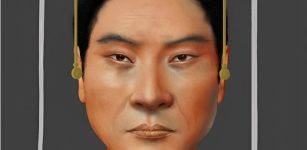 Facial Reconstruction Of Chinese Emperor Wu Who Lived 1,500 Years Ago
DNA | Mar 29, 2024
Facial Reconstruction Of Chinese Emperor Wu Who Lived 1,500 Years Ago
DNA | Mar 29, 2024 -
 Political Debates In Ancient Rome: Great Harshness, Personal Attacks And Unpleasant Atmosphere
Archaeology | Aug 29, 2018
Political Debates In Ancient Rome: Great Harshness, Personal Attacks And Unpleasant Atmosphere
Archaeology | Aug 29, 2018 -
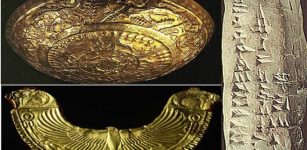 Forgotten Ancient Ugarit: One Of The Flourishing And Oldest Cities Of Canaan
Featured Stories | Jun 15, 2023
Forgotten Ancient Ugarit: One Of The Flourishing And Oldest Cities Of Canaan
Featured Stories | Jun 15, 2023 -
 Excavations At Okazaki Castle Reveal A 400-Year-Old Massive Unbroken Wall
Archaeology | Apr 16, 2016
Excavations At Okazaki Castle Reveal A 400-Year-Old Massive Unbroken Wall
Archaeology | Apr 16, 2016 -
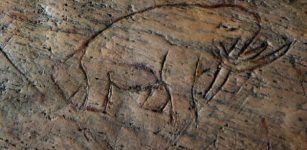 Controversial Study Of Ancient DNA Could Re-Write History Of South Florida And Prove Humans And Huge Prehistoric Animals Co-Existed
Archaeology | Sep 23, 2014
Controversial Study Of Ancient DNA Could Re-Write History Of South Florida And Prove Humans And Huge Prehistoric Animals Co-Existed
Archaeology | Sep 23, 2014 -
 Evidence Of Europe’s Earliest Human Presence, Dating Back 1. 3 Million Years Found At Venta Micena, Iberian Peninsula
Evolution | Jul 13, 2024
Evidence Of Europe’s Earliest Human Presence, Dating Back 1. 3 Million Years Found At Venta Micena, Iberian Peninsula
Evolution | Jul 13, 2024 -
 Evidence Of Copper Processing Unearthed At Archaeological Site In Oman
Archaeology | Mar 6, 2024
Evidence Of Copper Processing Unearthed At Archaeological Site In Oman
Archaeology | Mar 6, 2024 -
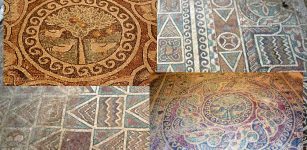 A 1,800-Year-Old Amasya Mosaic Goes On Display For The First Time After Seven Years
Archaeology | Jul 21, 2020
A 1,800-Year-Old Amasya Mosaic Goes On Display For The First Time After Seven Years
Archaeology | Jul 21, 2020 -
 Enigmatic Green Lady In British Folklore
Featured Stories | Jan 9, 2017
Enigmatic Green Lady In British Folklore
Featured Stories | Jan 9, 2017 -
 Tartarus – The Land Of The Dead – Mysterious Underground World
Featured Stories | Sep 13, 2015
Tartarus – The Land Of The Dead – Mysterious Underground World
Featured Stories | Sep 13, 2015 -
 Several Climate Crises In Mesopotamia – New Study
Archaeology | Apr 28, 2021
Several Climate Crises In Mesopotamia – New Study
Archaeology | Apr 28, 2021 -
 On This Day In History: Eugène Dubois Who Discovered Remains Of Java Man Was Born – On Jan 28, 1858
News | Jan 28, 2017
On This Day In History: Eugène Dubois Who Discovered Remains Of Java Man Was Born – On Jan 28, 1858
News | Jan 28, 2017 -
 Ancient Treasure Hidden In Perplexing Secret Underground Labyrinth In France – Dangerous Search – Part 1
Ancient Mysteries | Jan 16, 2020
Ancient Treasure Hidden In Perplexing Secret Underground Labyrinth In France – Dangerous Search – Part 1
Ancient Mysteries | Jan 16, 2020 -
 King David-Era Fort Unearthed In Golan Heights Sheds Light On Aramean Kingdom Of Geshur
Archaeology | Nov 14, 2020
King David-Era Fort Unearthed In Golan Heights Sheds Light On Aramean Kingdom Of Geshur
Archaeology | Nov 14, 2020 -
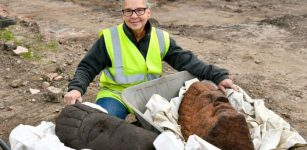 Unique And Priceless Large Roman Sculptures Found At Carlisle Cricket Club
Archaeology | May 25, 2023
Unique And Priceless Large Roman Sculptures Found At Carlisle Cricket Club
Archaeology | May 25, 2023 -
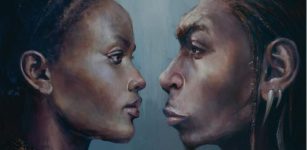 What Fossils Reveal About Hybridization Of Early Humans – History Of Humankind Is More Complex Than Previously Thought
Archaeology | Sep 6, 2022
What Fossils Reveal About Hybridization Of Early Humans – History Of Humankind Is More Complex Than Previously Thought
Archaeology | Sep 6, 2022 -
 History Of Jarlshof – Thousands Of Years Of History With Traces Of Picts, Vikings And Scots
Featured Stories | Jun 4, 2020
History Of Jarlshof – Thousands Of Years Of History With Traces Of Picts, Vikings And Scots
Featured Stories | Jun 4, 2020

